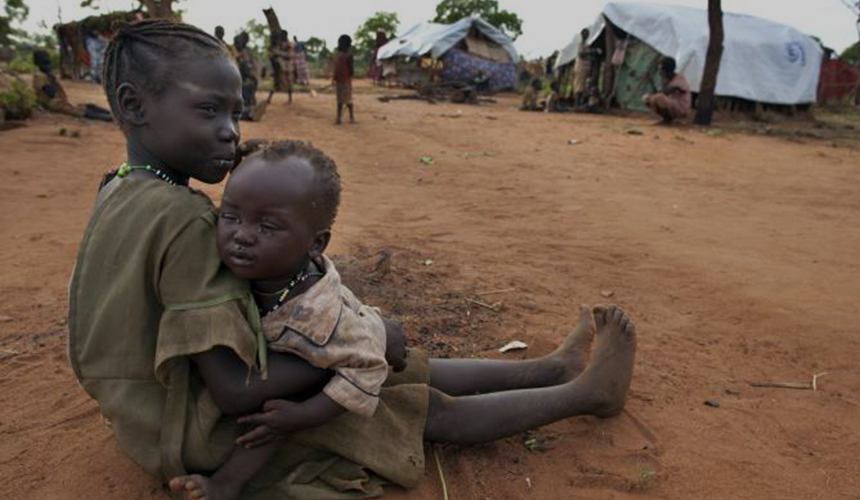 31 Jan 2022 Admin
31 Jan 2022 Admin
How does poverty affect the lives of people of Sub-Saharan Africa?
Sub-Saharan Africa, commonly called Black Africa, is one of the world's most populous places. With over one billion people spread over forty-nine countries, this region is the land of diverse cultures and people of different religious beliefs. In Cameroon alone, roughly two hundred and fifty ethnic groups live with a mix of Muslims, Christians, and adherents of local religions who speak over two hundred languages. However, what sets this region apart is the fast-growing population. Statistics show that between 1950 and 2010, the region's population grew from 186 million to 856 million, 43 percent of whom are people under the age of fourteen. Out of many challenges, poverty is one of the primary challenges faced by this region in current times.
What Are The Causes Of Poverty In the Sub-Saharan Africa Region?
Sub-Saharan Africa includes all the countries south of the Sahara desert, namely Ghana, Ethiopia, Kenya, Nigeria, Somalia, Zimbabwe, Tanzania, etc. In 2020, the total population of Sub Saharan Africa was registered to approximately 1.14 billion inhabitants. A growing youth and limited resources are causing difficulties for the people of this region to carry out an abundant livelihood. According to the reports of the United Nations, Sub-Saharan Africa accounts for two-thirds of the impoverished global population. Although the poverty rate has decreased from 56% in 1990 to 40% in 2018, the number of people under the poverty line is still rising. Half of the countries in this region have poverty rates higher than 35%. The two leading causes of poverty in this region are as follows:
Government Corruption: Across Sub-Saharan Africa, many countries are taking significant progressive steps towards the vision of a democratic and prosperous continent outlined in the African's Union's Agenda 2063. However, the country's prosperity is constantly threatened by high levels of government corruption. Alongside bribery, which is quite prevalent in most countries of this region, crony capitalism and poor governance have resulted in shocking forms of corruption. In response to such a condition, the government has held on to various anti-corruption legal instruments like regional organizations, civil societies, and media.
Lack of Economic Infrastructure: Economic infrastructure is an essential component of economic growth. If properly maintained, it helps improve the productivity of the countries and the quality of lives of people. However, a lack of economic infrastructure, i.e., inadequate infrastructure, lack of opportunity to generate income, financial debts, and downfall of local and global markets, affect the country's GDP. The situation is even worse in some parts of the region as there is no adequate water supply to meet the local needs but a high cost of living, pushing the common mass more to fall into the pits of poverty.
Effects Of Poverty On The Lives Of People Of Sub-Saharan Africa
Now that we have discussed the causes of poverty in Sub-Saharan Africa, let us understand its effects.
Unemployment: Unemployment is one of the critical impacts people living in a poverty-stricken region face prominently. Due to the constantly growing population, unemployed individuals cannot meet their financial obligations and thus lead to homelessness, illness, suicidal tendencies, and other undesired incidents.
Poor Infrastructure:It is found that the poor state of infrastructure in Sub-Saharan Africa, that is, electricity, water, roads, and information and communications technology, has reduced the economic growth and business productivity in this region by 40%. Global investors who look for a platform to promote their business and collaborate with these nations often turn down the proposal due to the lack of infrastructure and transport connectivity.
Poor Access To Education: Along with the problem of infrastructure, the region also suffers from poor access to education. According to media sources, in 2019, 65.5 percent of people aged 15 years and above in Sub-Saharan Africa were able to read and write. However, according to gender, the literacy rates differ by good numbers. While 72.2 percent of males were reported literate, the share among females was only 58.9 percent.
Poor Access To Healthcare: Sub-Saharan Africa is the region that is relatively unhappy and dissatisfied with its health facilities. Only 42.2 percent of the urban population can avail of proper health facilities, whereas a big chunk of the mass is left out needing the most basic healthcare facilities. As a result, many people from this region are becoming medical tourists searching for better quality medical facilities.
The continent accounts for 12% of the world population yet generates a mere 1 percent of global GDP and only 2 percent of world trade. However, despite these challenges, six out of ten world's rapidly growing economies are located in Sub-Saharan Africa. I hope you have an overview of the challenges faced by the people living in this region. For more informative blogs on Sub-Saharan Africa, please visit Royal Princess.